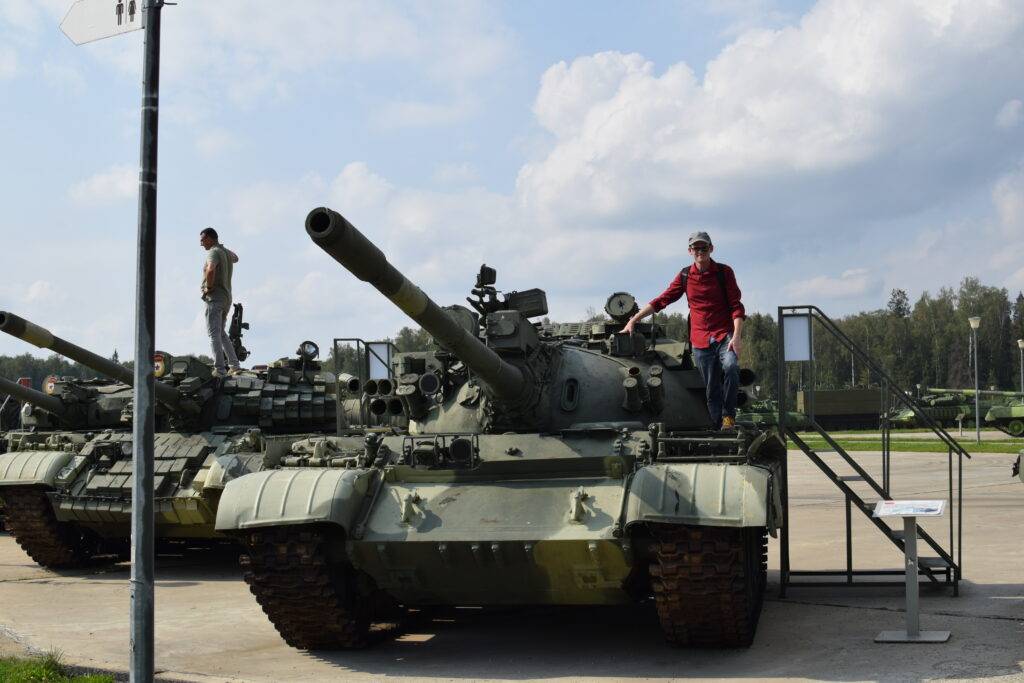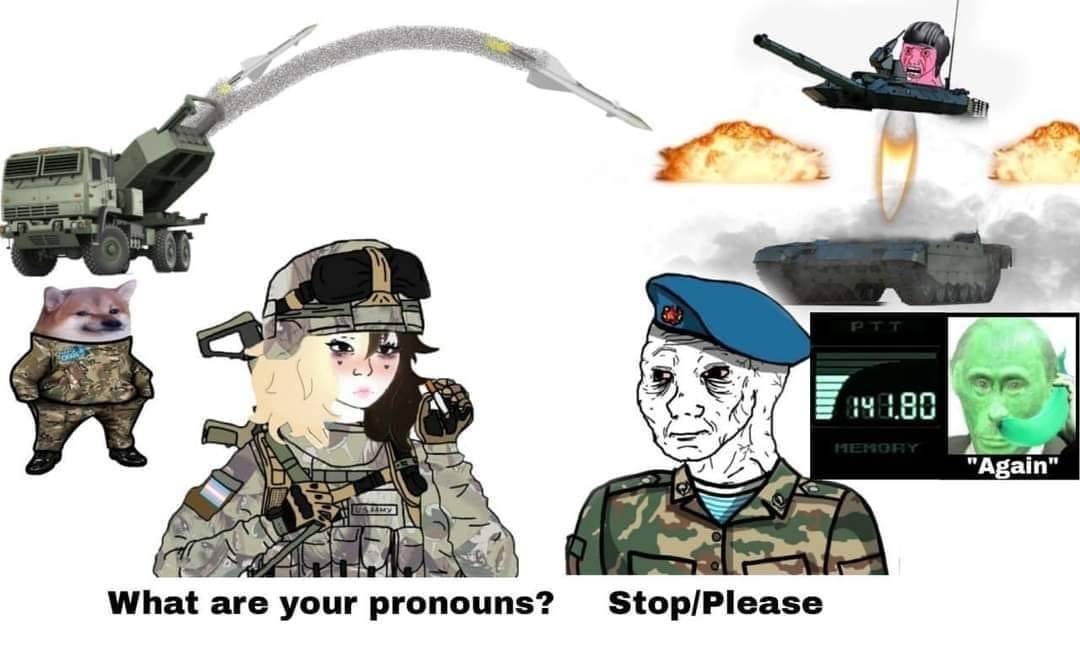Last month, retired Lt. Col. Alex Vershinin published an article about lessons learned from Ukraine, mainly, that the era of dramatic territorial gains through “maneuver warfare” might be over, using the same arguments and citing the same historical examples I made in early 2022.
What’s particularly interesting about Vershinin saying this is that I cited a previous article by him in one of my first posts about the SMO in April 2022. In short, NATO’s strategy as explained by Vershinin was all based on the assumption that Russian logistics could only fight a limited conflict for a few days before being forced to pause operations. I said this assumption was clearly wrong, and Russia was prepared for a much longer and more intense conflict.
Vershinin’s new article opens with this:
If the West is serious about the possibility of a great power conflict, it needs to take a hard look at its capacity to wage a protracted war and to pursue a strategy focused on attrition rather than manoeuvre.
Attritional wars require their own ‘Art of War’ and are fought with a ‘force-centric’ approach, unlike wars of manoeuvre which are ‘terrain-focused’. They are rooted in massive industrial capacity to enable the replacement of losses, geographical depth to absorb a series of defeats, and technological conditions that prevent rapid ground movement. In attritional wars, military operations are shaped by a state’s ability to replace losses and generate new formations, not tactical and operational manoeuvres. The side that accepts the attritional nature of war and focuses on destroying enemy forces rather than gaining terrain is most likely to win.
He went on to say this:
Military operations in an attritional conflict are very distinct from those in a war of manoeuvre. Instead of a decisive battle achieved through rapid manoeuvre, attritional war focuses on destroying enemy forces and their ability to regenerate combat power, while preserving one’s own.
Astonishing statement, because I said this back on May 12, 2022:
Taking all of this into account, here is my attempt to summarize how to win a battle, or a war.
Expose as much of the enemy force to attrition as possible, and for as long as possible, while minimizing your own force’s exposure to attrition, while still utilizing them 100% at key moments of the operation for the purposes they’re suitable for.
I find it concerning that Vershinin didn’t think that this is a good statement for war in general. Later Vershinin also expresses astonishment:
[Offensive operations] should be launched across a broad front, seeking to overwhelm the enemy at multiple points with shallow attacks. The intent is to remain inside a layered bubble of friendly protective systems, while stretching depleted enemy reserves until the front collapses. Only then should the offensive extend towards objectives deeper in the enemy rear.
Really curious, because that’s the whole point of Soviet deep operations, which I wrote about in April 2022. But there’s one big reason “maneuver warfare” offensive operations in World War II were different than now:
One of the key differences being that they didn’t have modern cruise missiles in 1944. They do now. Thanks to improvements in fire support and air power, it’s possible to disrupt operations deep behind enemy lines without physically sending troops there.
Why is Vershinin so astonished at the idea of the enemy having adequate air power and fire support? He even brings up the WWI Battle of Verdun, and in the same context I did in April 2022 – forcing the enemy to fight in a disadvantageous position and incur more losses.
Some other amazing statements from Vershinin:
In practice, this means it is easier to mass fires than forces. Deep manoeuvre, which requires the massing of combat power, is no longer possible because any massed force will be destroyed by indirect fires before it can achieve success in depth. Instead, a ground offensive requires a tight protective bubble to ward off enemy strike systems. This bubble is generated through layering friendly counter-fire, air defence and EW assets. Moving numerous interdependent systems is highly complicated and unlikely to be successful. Shallow attacks along the forward line of troops are most likely to be successful at an acceptable cost ratio; attempts at deep penetration will be exposed to massed fires the moment they exit the protection of the defensive bubble.
Okay look, here’s something I wrote recently on Feb. 28 2024:
First I have to say that this might be the most badly misunderstood war in our era. And when “experts” compare the Ukraine war with World War I, that suggests they don’t understand either war.
In World War I, all the major participants were more industrialized and had better logistics, and more firepower than ever before in human history. The idea that WWI was just “positional warfare” is nonsense. There was constant movement and rotation of troops, and redirecting logistical trains as necessary.
Back in the “old days,” if your army of guys with spears defeated the enemy guys with spears, they would run away and you would capture their city, which looks really dramatic on a map. But if you tried this in WWI, the results were not so dramatic. If for example the Germans launched an offensive and captured several French trenches, the French would pound them with artillery, bring in another 100 thousand men by train, and counter-attack, taking back the trenches in a day or two, resulting in a stalemate.
Offensives in World War II looked more dramatic for a pop history video on YouTube because technology had changed once again. There were tanks and far more trucks, so it was possible to launch an attack that could breach enemy defensive lines and make huge gains before anyone had time to respond to it. A “blitzkrieg” (again that pop history mentality) spearheaded by tanks could attack with massive local superiority and far faster than the defending force could bring in reinforcements. Remember that armies at this point were still reliant on horses and pack mules, so it wasn’t possible to immediately bring in reinforcements from 500 kilometers away.
Now we’re back to that “positional warfare” which really isn’t positional at all. There are enough wheels to move around whole armies, taking them from one end of the front line to the other almost overnight. So if the Russians move half of their army to the South, the Ukrainians can also move half of their army to the South. And with modern satellites and drones, it is near-impossible to conceal your intentions from the enemy.
That’s why the “live maps” of territorial control of Ukraine look so boring and barely change over months, but that doesn’t mean there’s no movement and it’s a moronic thing to say. There’s a constant dynamic movement always happening, it just doesn’t usually result in territorial changes.
We can make the logical conclusion that when facing a relatively equal force, it generally isn’t possible to make great territorial gains. Unless… someone uses low-yield nukes. The Russians won’t use low-yield nukes in a civil war, but there is no such constraint for NATO, and there’s no constraint for Russia fighting NATO either.
But as time goes on, improvements in communication, logistics, bureaucracy, and overall political stability makes such dramatic military defeats less likely. Even as the 19th Century, when the US lost an army to the natives, that resulted in forts being abandoned from lack of men to defend them and temporary loss of territorial control. But today when an industrialized state loses an army, they just immediately bring in a new army to replace it, resulting in very little territorial loss.
In the absence of nuclear weapons, every 21st century peer-on-peer war will resemble the Ukraine, a war of fire power, logistics, and attrition, with very little in the way of territorial changes that look good on a TikTok pop history video. Armies don’t fight on horse carts anymore.
Welcome to the new world.
Ian Kummer

Support my work by making a contribution through Boosty
All text in Reading Junkie posts are free to share or republish without permission, and I highly encourage my fellow bloggers to do so. Please be courteous and link back to the original.
I now have a new YouTube channel that I will use to upload videos from my travels around Russia. Expect new content there soon. Please give me a follow here.
Also feel free to connect with me on Quora (I sometimes share unique articles there).



What is most surprising is that the intellectual capacity of key figures in the ‘West’, including NATO, appears to have declined tremendously in the 21st century.
Have we not become decidedly stupid?
The same applies to the coverage and commentary on the war in Ukraine and the Israeli coverage of the Gaza massacre, but the ‘quality’ of these Western media reports feels at an all-time low.
I’m beginning to think about the hypothesis that “neoliberal ideology and the financial economisation of societies lead to a decline in the intellectual capacity of their internal personnel.”
Whatever the case, the quality of the people and openers in the mainstream media is awful.
Those who not long ago were ranting about the depletion of Russian missiles should normally then be stripped of all authority over war commentary.
Is there now an unspoken rule in the West that the more mainstream a society’s media is, the more stupid people must be allowed to comment?
If I were a betting man, I’d wager a fortune that in the West, both popularly and in the halls of power, the conclusions drawn from the war, its image, will be dictated near-exclusively by the kind of “memes” used for the header and its like among the millions of 4chan /pol/ trash factory. No matter how undeniable and definitive the trouncing will be, it’ll be a modern-age rehashing of Wehrmacht memoirs crossbred with the “we only lost Vietnam because we didn’t go hard enough and we totally could” school of thought. It’ll be all about Russians being just like Grunts from the Halo game franchise, hapless mewling runts begging to not be killed, and the Western Banderite international being seven foot tall Spartans exterminating them by the million, and the war will only have been lost because the Congress didn’t send enough ammo in time. All propaganda talking points, perfectly insluated from uncomfortable realities going counter to them.
I highly recommend Aurelien’s piece on this sorta thing, “France Saves Europe” (title is a context joke), https://aurelien2022.substack.com/p/france-saves-europe . One of the most relevant passages from there: “I don’t think it’s possible to argue with people who think such things, because changing their mind requires the acquisition of knowledge, which is inherently ruled out.”
Hey Red Outsider, long time no see! I’ll take a look at the article you linked